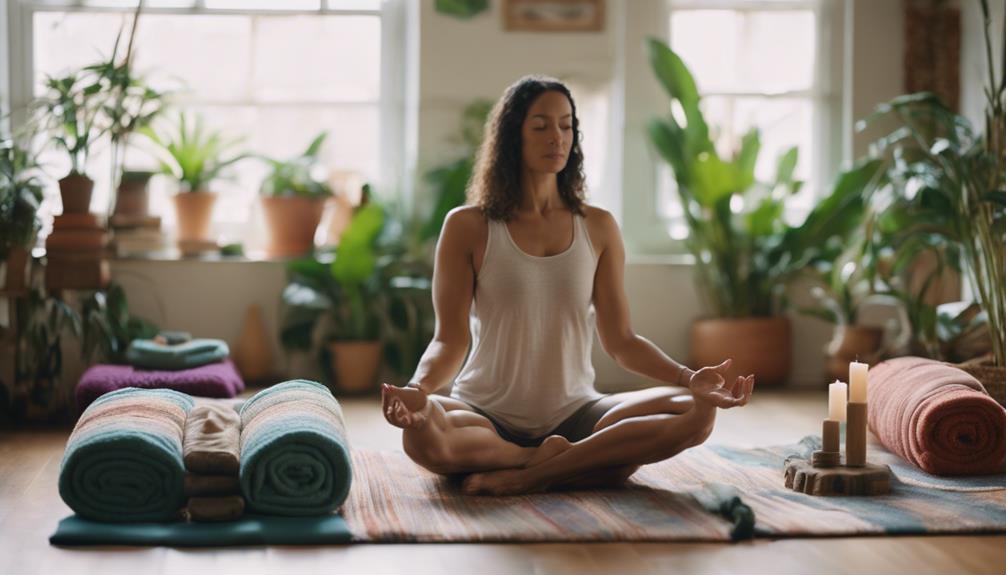Choosing the right yoga mat is essential for a fulfilling practice, and one of the most important factors to consider is thickness. The thickness of a yoga mat can significantly affect your comfort, stability, and overall experience during yoga sessions. With a variety of options available, understanding the importance of mat thickness will help you make an informed decision tailored to your individual needs and preferred yoga styles.
In this article, we will explore the various aspects of yoga mat thickness, including its impact on comfort, joint protection, and stability. Additionally, we will discuss how to choose the right thickness based on your specific yoga practice, as well as considerations for eco-friendly materials and maintenance tips. Winchester Corepower YogaCouples Yoga NycFunky Yoga Pants
Understanding the Importance of Yoga Mat Thickness
The thickness of a yoga mat plays a crucial role in providing support and comfort. A thicker mat can cushion the body against hard surfaces, making it particularly beneficial for beginners or those with sensitive joints. Conversely, a thinner mat may offer a firmer surface that some practitioners prefer for balance and stability. Understanding your personal comfort levels and what your body needs is fundamental in selecting the right thickness.
Furthermore, the importance of yoga mat thickness extends beyond comfort. It can significantly influence your performance during various poses. A mat that is too thick can compromise balance, while one that is too thin may not provide adequate support. Therefore, evaluating your personal requirements and styles of yoga is essential in determining the right thickness for you.
Standard Thickness Options for Yoga Mats Explained
Yoga mats typically come in several standard thickness options: 1/16 inch (1.5 mm), 1/8 inch (3 mm), 1/4 inch (6 mm), and 1/2 inch (12 mm). The thinnest mats, at 1/16 inch, are often favored by yogis practicing styles that require a strong connection with the ground, such as Ashtanga or Vinyasa. These mats allow for greater stability and balance, essential for performing intricate poses.
On the other end of the spectrum, the thicker options, like 1/2 inch mats, offer substantial cushioning and are ideal for restorative practices or for individuals with injuries. However, they can hinder stability in more dynamic practices. Understanding these standard thickness options can guide your selection process based on your comfort and practice type.
How Thickness Impacts Comfort During Yoga Practice
Comfort is a subjective experience, and the thickness of your yoga mat plays a vital role in achieving it. A thicker mat provides more cushioning, which can alleviate pressure on your knees, hips, and spine during poses that require kneeling or sitting. For those who may experience discomfort or pain while practicing yoga, investing in a thicker mat can create a more enjoyable experience.
Conversely, some practitioners may find excessive cushioning to be distracting, leading to difficulty in balancing poses. A thinner mat can offer a more grounded feel, enhancing stability during poses. Ultimately, your comfort level will depend on your body type, any pre-existing conditions, and personal preferences regarding cushioning during practice.
Choosing the Right Thickness for Your Yoga Style
Different styles of yoga require different levels of stability and support, which directly influences the choice of mat thickness. For instance, if you practice Hatha or Yin yoga, where the poses are held for extended periods, a thicker mat may provide the necessary comfort and support. The added cushioning can help you relax into the poses without worrying about discomfort.
In contrast, for high-energy practices like Power Yoga or Hot Yoga, a thinner mat might be preferable. These styles demand more balance and flexibility, so a firmer surface can enhance your ability to maintain poses without slipping. Evaluating your yoga style and the specific demands it places on your body will aid you in choosing the appropriate mat thickness.
Evaluating Yoga Mat Thickness for Joint Protection
Joint protection is an essential factor to consider when selecting the thickness of your yoga mat. Thicker mats offer better shock absorption, which can be beneficial for those with joint issues or experiencing discomfort during practice. The cushioning effect of a thicker mat can help reduce the impact on your knees, wrists, and elbows during dynamic movements.
However, it’s also important to recognize that a thicker mat may not be suitable for everyone. Some individuals may find that excessive padding can lead to instability, particularly in weight-bearing poses. Therefore, it is vital to find a balance that provides sufficient cushioning while allowing for secure footing and balance.
The Role of Thickness in Stability and Balance
Thickness directly influences your stability and balance during yoga practice. A thinner mat provides a more stable surface, allowing for better contact with the ground, which is especially important for standing poses where balance is crucial. This contact helps you maintain proper alignment and execute poses effectively.
On the other hand, a thicker mat may create a soft surface that can lead to instability, particularly for poses that require a firm foundation. This is especially significant for balance-focused practices, where even the slightest instability can affect your performance. Therefore, it is essential to consider how mat thickness will impact your ability to maintain balance throughout your practice.
Comparing Thickness for Different Types of Yoga Styles
Different types of yoga call for varying levels of support and stability, making thickness a key consideration. For instance, practitioners of restorative yoga may benefit from thicker mats that offer additional cushioning for long-held postures. These mats allow practitioners to fully relax and immerse themselves in the restorative aspects of their practice.
Conversely, styles that emphasize flow and transitions, such as Vinyasa or Bikram yoga, may require a mat that is thinner for better grip and stability. The need for a secure footing during transitions makes a firmer mat more advantageous for these practices. Understanding the specific requirements of your chosen yoga style will help you select the most suitable thickness for your needs.
Eco-Friendly Materials and Their Thickness Variations
When selecting a yoga mat, material choice is often as important as thickness. Many eco-friendly mats are available in various thicknesses, allowing practitioners to align their values with their practice. Natural rubber, jute, and TPE (thermoplastic elastomer) are popular choices for those seeking sustainable options, and they come in different thicknesses to suit various preferences.
Eco-friendly mats can often be found in the standard thicknesses mentioned earlier, but some manufacturers offer unique options that blend sustainability with performance. It is important to explore what thicknesses are available in eco-friendly materials to ensure that you are getting the right balance of sustainability and comfort.
Maintenance and Care Tips for Yoga Mats of All Thicknesses
Regardless of thickness, proper maintenance is vital to extending the life of your yoga mat. Regular cleaning is necessary to prevent the buildup of bacteria and odors, especially for thicker mats that tend to absorb moisture. A gentle wash with mild soap and water, followed by air drying, can help keep your mat fresh and hygienic.
Additionally, it’s crucial to store your mat correctly to avoid damage. Rolling your mat rather than folding it can help maintain its shape and prevent creasing, which can be particularly problematic for thicker mats. Following these maintenance tips will ensure that your mat remains in good condition, enhancing your practice for years to come.
Selecting the right thickness for your yoga mat is crucial in creating a comfortable and effective practice. By understanding how thickness affects comfort, stability, and joint protection, you can make an informed decision that aligns with your individual needs and yoga style. Whether you prefer a thicker mat for added cushioning or a thinner mat for stability, the right choice will enhance your practice and support your journey in yoga. Take the time to evaluate your options and find the perfect mat that resonates with your practice and personal preferences.


